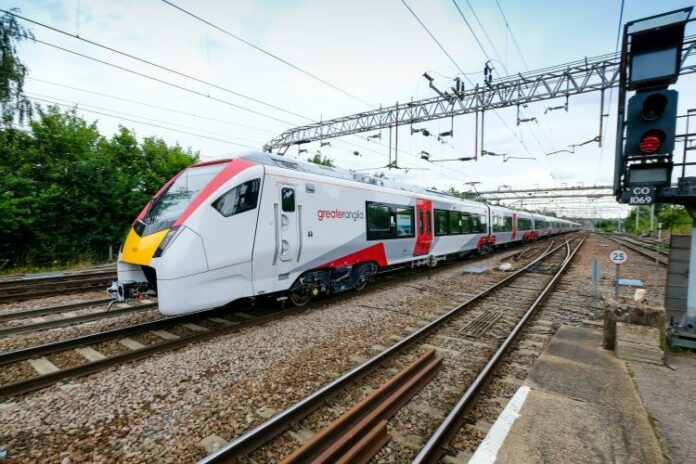Greater Anglia’s brand-new trains are now in passenger service on the Norwich to Cambridge line.
The first new train in passenger service on the route was Tuesday’s 6.33 Norwich-Cambridge service, served by a Stadler bi-mode train, which can switch between diesel and electric power.
Jamie Burles, Greater Anglia’s managing director, said: “We’re really pleased to be running our new trains between Norwich and Cambridge. This is a very busy route for commuters, business travellers and leisure travellers and feedback has been very positive.
“We were committed to beginning our transformation in Summer 2019 and we’ve done just that.
“This is an incredibly exciting time for everyone involved with East Anglia’s railways – customers, communities and all the team here at Greater Anglia.
“Our new trains will transform rail travel across the region, bring wider economic, social, business, tourism and environmental benefits. It is the largest wholescale replacement of trains by any train company in the UK.”
Greater Anglia is getting 38 regional bi-mode trains (24 x 4-carriage trains and 14 x 3-carriage trains) which switch between electricity and diesel power, from international rail vehicle construction company Stadler, headquartered in Switzerland.
They will offer a positive step change on regional routes across Norfolk, Suffolk, Cambridgeshire and parts of Essex – mainly the Marks Tey to Sudbury line.
Every train is longer, with many more seats, and other features including air conditioning, plug and USB points and improved accessibility.
They will also improve reliability and resilience with three and four carriage trains replacing a fleet of one, two and three carriage trains, many of which are nearly 40 years old.
Over the coming months new trains will be rolled out across the region. The majority of bi-mode trains should be in service by the end of 2019.
Photo credit: Greater Anglia



































 0113 2082620
0113 2082620 info@railbusinessdaily.com
info@railbusinessdaily.com 15 Mariner Court, Wakefield WF4 3FL
15 Mariner Court, Wakefield WF4 3FL

